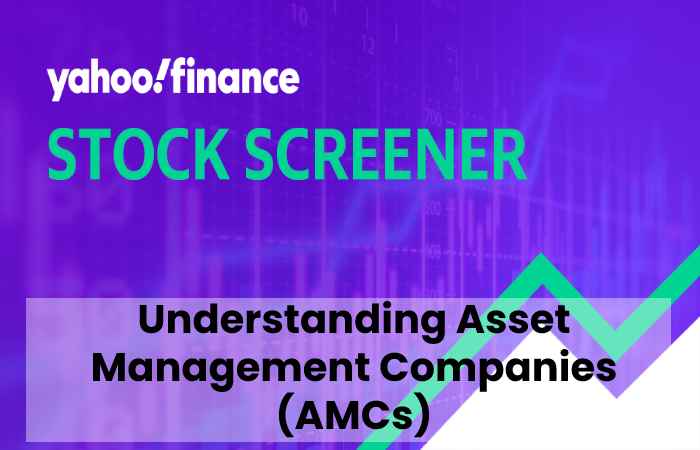Yahoo Finance Amc
Previous Close: 6.83
Open: 7.65
Bid: 7.27 x 1200
Ask: 7.28 x 800
Day’s Range: 7.14 – 7.37
52 Week Range: 6.81 – 45.95
Volume: 7,473,720
Avg. Volume: 42,895,038
Market Cap: 3.737B
Beta (5Y Monthly): 1.78
PE Ratio (TTM): N/A
EPS (TTM): -2.05
Salaries Date: Nov 07, 2022 – Nov 11, 2022
Forward Share & Yield: N/A (N/A)
Ex-Dividend Date: Mar 06, 2020
1y Target Est: 3.94
Table of Contents
Chart Yahoo Finance Amc

What Is an Asset Management Company (AMC)?
An asset organization company (AMC) is a firm that invests pooled funds from clients, putting the capital to work through diverse investments, including stocks, bonds, real estate, master limited businesses, and more.
Along with high-net-worth separate (HNWI) portfolios, AMCs manage hedge funds and pension plans to serve smaller investors better. Create pooled structures such as mutual funds, directory funds, or exchange-traded coffers (ETFs), which they can manage in a single centralized portfolio.
AMCs are colloquially referred to as money managers or money management firms. Those that offer public mutual funds or ETFs are also known as investment companies or mutual fund companies. Such businesses include Vanguard Group, Fidelity Investments, T. Rowe Price, and many others. Their assets generally distinguish AMCs under management (AUM)—the number of assets they manage.
Asset Management Company
Key Takeaways
- An asset management company (AMC) invests pooled client funds into various securities and assets.
- AMCs vary in size and operations, from personal money managers that handle high-net-worth (HNW) individual accounts and have an insufficient hundred million dollars in AUM to giant investment firms that offer ETFs and mutual funds trillions in AUM.
- AMC managers are salaried via fees, usually a percentage of a client’s assets under management.
- Most AMCs remain held to a fiduciary standard.
Understanding Asset Management Companies (AMCs)
Because they have a more fantastic pool of resources than the individual investor could access on their own, AMCs provide investors with additional diversification and investing options. Buying for many clients allows AMCs to practice economies of scale, often getting a price discount on their purchases.
Pooling assets and paying out proportional revenues also allows investors to avoid the minimum investment requirements frequently required when purchasing securities on their own and the ability to invest in a more significant assortment of protection with a smaller amount of investment funds.
AMC Fees
In most cases, AMCs charge a fee as a percentage of the client’s total AUM. This asset management fee is an apparent annual fraction calculated and paid monthly. For example, if an AMC customer a 1% yearly fee, it would charge $100,000 in annual costs to manage a portfolio worth $10 million.
However, since portfolio values fluctuate daily and monthly, the management fee calculated and paid monthly will also fluctuate monthly. They are continuing with the overhead example. If the $10 million portfolio upsurges to $12 million next year, the AMC will make an additional $20,000 in organization fees.
Conversely, if the $10 million portfolio fails to $8 million due to a market correction, the AMC’s price would be reduced by $20,000. Thus, charging fees as a fraction of AUM serves to align the AMC’s interests with that of the customer; if the AMC’s clients prosper, so does the AMC, but if the clients’ portfolios brand losses, the AMC’s revenues will decline as well. deportivo diez
Buy Side
Typically, AMCs are considered buy-side firms. This means they help clients make investment decisions based on proprietary in-house research and data analytics while using security references from sell-side firms.
In contrast, sell-side firms such as asset banks and stockbrokers sell investment services to AMCs and other investors. They achieve a great deal of market analysis, looking at trends and creating projections. They aim to generate trade orders on which they can charge transaction fees or commissions.
Asset Management Companies (AMC) Vs. Brokerage Houses
Brokerage houses and AMCs overlay in many ways. Along with trading securities and doing analysis, numerous brokers advise and accomplish client portfolios, often through a unique “private investment” or “wealth organization” division or subsidiary. Many also offer proprietary mutual funds. Their brokers’ whitethorn also acts as advisors to clients, discussing financial goals, endorsing products, and assisting clients in other ways.
In general, though, brokerage house houses accept nearly any client, regardless of the amount they have to invest, and these businesses have a legal standard to provide “suitable” services. Suitable means that as long as they make their best effort to manage the funds wisely and in line with their client’s stated goals, they are not responsible if their clients lose money.
Pros
- Professional, legally liable management
- Portfolio diversification
- Greater investment options
- Economies of scale
Cons
- Sizeable management fees
- High account minimums
- Risk of underperforming the market
Example of an Asset Management Company (AMC)
As mentioned earlier, purveyors of famous mutual fund families are technically AMCs. Also, many high-profile banks and brokerages take asset management divisions, usually for HNWIs or institutions. There are also isolated AMCs that are not household names but are pretty established in the investment field.
Although, One example is RMB Capital, an independent investment and advisory firm with approximately $10 billion in AUM. Also, Headquartered in Chicago, with ten other offices around the U.S. and roughly 142 staff, RMB has different divisions, including:
- RMB Wealth Management for wealthy retail investors
- Also, The RMB Asset Organization for institutional investors
- Also, RMB Retirement Keys, which handles retirement plans for employers
The firm also has a minor, RMB Funds, that achieves six mutual funds.
Conclusion
Although, What is the actual value of AMC stock? DCF Value. This DCF valuation model was created by Alpha Spread and was last updated on Sep 24, 2022. Also, The estimated DCF Value of one AMC stock is 9.63 USD. USD 7.99 0.14 1.78%, Considering the 90-day investment horizon and your above-average risk tolerance, the recommendation regarding AMC Entertainment Holdings is ‘Strong Sell’. Yahoo Finance Amc
Also read: techbigs

